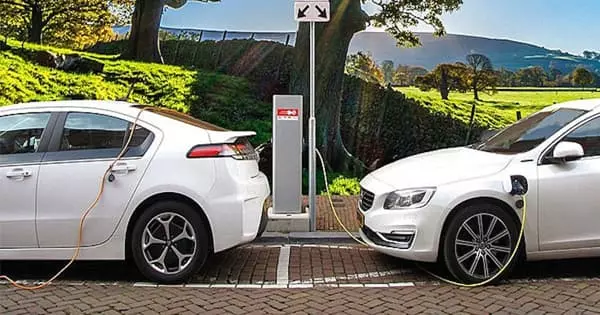Oregon State University’s alternative-energy research is paving the way for the widespread adoption of clean cars powered by direct-ethanol fuel cells. Zhenxing Feng of the OSU College of Engineering led the development of a catalyst that addresses three long-standing issues with DEFC cells: low efficiency, the high cost of catalytic materials, and the toxicity of chemical reactions inside the cells.
Feng and colleagues from Oregon State, the University of Central Florida, and the University of Pittsburgh discovered that incorporating fluorine atoms into palladium-nitrogen-carbon catalysts had a number of beneficial effects, including the ability to keep the power-dense cells stable for nearly 6,000 hours. A catalyst is a substance that speeds up a reaction without undergoing any permanent chemical changes.
Findings were published in Nature Energy.
Cars and trucks powered by gasoline or diesel engines rely on the combustion of fossil fuels, which results in carbon dioxide emissions. Motor vehicles are a major source of CO2 in the atmosphere, which is a major contributor to climate change.
Alternative energy conversion devices that use fuel from renewable and sustainable sources are urgently needed to achieve carbon-neutral and zero-carbon-emissions goals. Direct-ethanol fuel cells have the potential to replace gasoline and diesel-powered energy conversion systems as a source of power.
Zhenxing Feng
“Combustion engines emit massive amounts of CO2,” said Feng, an associate professor of chemical engineering. “Alternative energy conversion devices that use fuel from renewable and sustainable sources are urgently needed to achieve carbon-neutral and zero-carbon-emissions goals. Direct-ethanol fuel cells have the potential to replace gasoline and diesel-powered energy conversion systems as a source of power.”
Feng and his colleagues are currently seeking funding to create prototypes of DEFC units for portable devices and vehicles. “If this is successful, we should be able to deliver a commercially viable device in five years,” he said. “With more industrial collaborators, the DEFC vehicle should be operational in ten years.”
Ethanol, also known as ethyl alcohol, is the active ingredient in alcoholic beverages and is composed of carbon, hydrogen, and oxygen (its chemical formula is C2H6O). It is produced naturally by yeasts through the fermentation of sugars and can be derived from a variety of sources, including corn, wheat, grain sorghum, barley, sugar cane, and sweet sorghum.

The Midwest produces the majority of the ethanol produced in the United States, which is typically made from corn. Feng explains that a fuel cell uses the chemical energy of hydrogen or other fuels to produce electricity in a clean and efficient manner. They can run on a variety of fuels and feedstocks and can power systems as large as a utility power plant or as small as a laptop computer.
“Using DEFC technology, ethanol can be produced from a variety of sources, particularly biomass such as sugar cane, wheat, and corn,” Feng explained. “One advantage of producing ethanol from biological sources is that plants absorb atmospheric carbon dioxide.”
Because it is a liquid, ethanol can deliver more energy per kilogram than other fuels such as methanol or pure hydrogen. Furthermore, as Feng points out, infrastructure for both producing and distributing ethanol is already in place, making DEFC an appealing option for replacing internal combustion engines.
“In 2007, the first vehicle powered by an ethanol-based fuel cell was developed,” Feng explained. “However, due to the low efficiency of DEFC, the costs associated with catalysts, and the risk of catalyst poisoning from carbon monoxide produced in reactions inside the fuel cell, further development of DEFC vehicles has significantly lagged.”
To address these issues, the research team, which included OSU’s Maoyu Wang as well as scientists from China’s Southern University of Science and Technology and Argonne National Laboratory, created high-performance palladium alloy catalysts that use less of the precious metal than current palladium-based catalysts. Palladium, platinum, and ruthenium are catalytic elements that are valuable but expensive and difficult to obtain.
“Our team demonstrated that introducing fluorine atoms into palladium-nitrogen-carbon catalysts changes the environment around the palladium, improving both activity and durability for two important reactions in the cell: the ethanol oxidation reaction and the oxygen reduction reaction,” Feng explained. “Argonne advanced synchrotron X-ray spectroscopy characterizations indicate that the addition of a fluorine atom results in a more nitrogen-rich palladium surface, which is favorable for catalysis. Inhibiting palladium migration and reducing carbon corrosion improves durability.”





